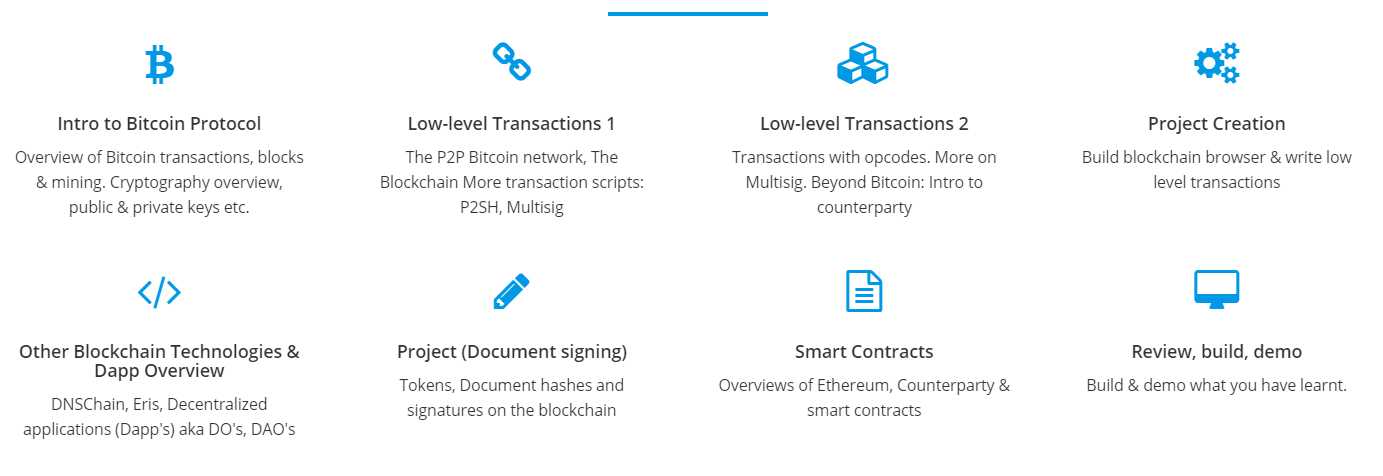

#区块链和命运之轮:区块链技术在疾病监测和大流行预防中的作用#
轮,以至于没有人能长期站立。最后,它总是总是再次回到同一个地方。
在“看台”中,人造病毒会在很短的时间内消灭世界上大多数人口。抗原是一种基因修饰的流感病毒,被设计为不断变化的药物,因此使其对疫苗极为或完全无害。该病毒是美国政府资助的一项更大的生物武器计划的一部分,该计划被称为Blue Project。
Blue Blue的终结游戏是全球性Superflu流行病,绰号Captain Trips。超级流感在世界范围内迅速蔓延,使人类几乎没有生命线。
当然,看台是虚构的作品。故事讲述的是幸存者(占全球人口的0.6%是自然免疫的)如何应对新世界,最终沦为善恶之间的最终立场。
但是,这本书关于流感样疾病迅速传播并感染世界上越来越多的人的核心信息是非常真实和相关的。
它的发生现在。
冠状病毒爆发:转轮再次来到同一地方
在撰写本文时,随着该病毒在新国家的流行,冠状病毒的爆发已经在全球范围内杀死了近3000人,确诊并增加了80,000例感染。
大流行是指跨越各个年龄段感染和杀死大部分人口的国际跨界流行病。最致命的事件可能是14世纪中叶的“黑死病”,造成75至2亿人死亡(真实数字永远不会知道),以及1918年的西班牙流感(可能造成多达1亿人死亡)。
全球性流行病可以随时随地发生,正如我们所看到的持续冠状病毒爆发一样。第一例病例于2019年12月31日在中国武汉被发现。武汉大约有1100万人,成为冠状病毒感染的温床。该病像野火一样蔓延,不久就越过中国其他城市,越过国际边界。
现代航空旅行意味着被感染的人可以在几个小时内到达世界上几乎任何地方,这几乎不可能进行遏制,并且全球性传染确实是有可能的。
那么,如何防止车轮再次回到14世纪中叶和1918年的原地?
使用区块链技术作为预防流行病的武器
疾病控制与预防中心(CDC)是美国首席公共卫生和疾病预防机构。疾病预防控制中心的工作人员无论何时何地都可检测到传染病暴发。CDC正在研究区块链技术如何成为其武器库中的最新武器,以抗击疾病并防止未来的流行病肆虐世界。
但是,有时难以与当地的当地卫生执法机构及时共享信息的困难阻碍了这一至关重要的斗争。语言障碍,疫情地理位置之间的距离过大,文化差异以及许多其他因素可能会成为一个问题,这会减慢信息的传输和交换,在某些情况下,这实际上可能成为生死攸关的情况。在应对致命疾病暴发时,时间至关重要。
当前,疾病预防控制中心将流行病学数据上传到基于云的解决方案,这远非理想,因为由于数据隐私和安全风险,无法将个人身份信息存储在此处,这迫使现场操作人员寻找替代解决方案,这意味着更宝贵的时间。区块链支持的解决方案将解决此问题,因为可以在遵守数据隐私和安全法规的同时立即共享数据。
但是CDC对区块链技术的预期用途只是医疗领域其他众多革命性用例之一。
我们已经看到,疾病的爆发可能在地球上的任何时间,任何地方发生,很少或没有预警。区块链无法阻止爆发本身,没有什么可以阻止。这些是过去发生过的自然事件,将来会再次发生。记住,那个轮子一直在旋转。
但是区块链可以做的是通过互联设备网络创建第一道快速防御线,其唯一目的是永久性地一年365天,每天24/7保持对疾病暴发的警惕。区块链是一种高度可扩展的解决方案,可实时工作,实施机器学习和人工智能例程,可以收集,分析和整理数据,并在发现爆发时立即建议采取的措施。这种即时响应能力可以代表快速遏制和全球传染之间的差异。
There is a line in Stephen King's The Stand that goes: 'Life was such a wheel that no man could stand upon it for long. And it always, in the end, came round to the same place again.'
In The Stand, a man-made virus wipes out most of the world population within a short timespan. The antigen is a genetically modified flu-virus designed to be a constantly shifting agent, thus rendering it extremely or totally invulnerable to vaccines. The virus was part of a larger US Government-funded bio-weapons program known as Project Blue.
Project Blue's end game is a global Superflu epidemic, nicknamed Captain Trips. The Superflu rapidly spreads worldwide, thinning out the human race to barely a thread of existence.
The Stand is a work of fiction, of course. The story deals with how the survivors (0.6% of the entire human population are naturally immune) deal with the new world, ultimately boiling down to a final stand between good and evil.
But the book's core message of a flu-like disease rapidly spreading and infecting an ever-increasing number of people across the world is very real and relevant indeed.
It's happening right now.
Coronavirus outbreak: The wheel has come to the same place again
At the time of writing, the coronavirus outbreak has killed almost 3,000 people worldwide, with more than 80,000 infections confirmed and rising, as the virus pops up in new countries.
Pandemics, defined as international cross-border epidemics that infect and kill large percentages of the population have occurred through the ages. The deadliest perhaps are The Black Death in mid-14th-century that killed between 75 and 200 million people (true figure will never be known), and the 1918 Spanish Flu, which may have killed up to 100m people.
Global epidemics can occur anytime, anywhere, as we have seen with the ongoing coronavirus outbreak. The first case was detected in Wuhan, China, on December 31, 2019. Wuhan, a city of around 11 million people, became a hotbed for coronavirus infection. The disease spread like wildfire and soon reached other Chinese cities before crossing international borders.
Modern air travel means that an infected individual can reach almost anywhere in the world within a few hours, which makes containment almost impossible, and global contagion a real possibility.
So what can be done to prevent that wheel from coming back again to the same place as it did in the mid 14th century and 1918?
Using blockchain technology as a weapon to prevent pandemics
The Centers for Disease Control and Prevention (CDC) is the United States' chief public health and disease prevention agency. CDC operatives show up wherever and whenever an outbreak of an infectious disease is detected. The CDC is researching how blockchain technology can become the latest weapon in their armamentarium to fight disease and prevent future epidemics from razing the world.
But this vital fight can sometimes be hampered by difficulties in the timely sharing of information with local health enforcement agencies on the ground. Language barriers, the sheer distance between the geographical location of an outbreak, cultural differences, and many other factors might become an issue that slows the transmission and exchange of information, which in some cases might literally become a life or death situation. Time is of the essence when dealing with outbreaks of the deadly disease.
Currently, the CDC uploads epidemiological data to a cloud-based solution, which is far from ideal as p
#区块链如何促进废物管理创新#
Waste management is an essential procedure as it entails the actions and activities, such as treatment, transportation, and collection, necessitated in the disposal and control of waste. Additionally, waste takes different forms ranging from gas to liquid matter.
As we continue adapting tech-savvy lifestyles, the issue of electronic waste or e-waste has become prevalent as the usefulness of many electronic gadgets and products continues to diminish. According to a United Nations report, the world emits as much as 50 million tonnes of e-waste worth $62.5 billion annually, and this exceeds the GDP of most nations. On the other hand, the amount of municipal solid waste produced yearly surpasses 2.01 billion tonnes.
These statistics, therefore, show how prudent it becomes to have efficient waste management measures. Blockchain can come in handy in the realization of this objective through the creation of a trustworthy, transparent, and immutable supply chain network for a plethora of different records. This technology can aid in the digital tracking of information, allowing an in-depth analysis of supply chains.
Trading off waste for digital tokens
When it comes to waste management, creativity, and tech-savviness are necessitated as they encourage people to incorporate more environmentally friendly measures. For instance, by offering some form of compensation, people will feel entitled to dispose of waste in the right manner.
Blockchain has proven to be an ideal player in initializing digital tokens. For instance, a Canadian company called Plastic Bank in operation in Haiti and Peru utilizes a blockchain solution to reduce the ecological ruin prompted by plastic waste.
The company has strategically located recycling centers where people take their waste, such as empty plastic water bottles, cups, and bags in exchange for digital tokens secured via a blockchain platform and can be redeemed for food or charging phones. All the plastic collected is then sold to a buyer for recycling purposes.
This blockchain model is gaining traction because an Italian town called Miglianico borrowed a leaf by implementing a similar idea. Through a blockchain-powered “Pay as You Throw” (PAYT) model, the town has been able to enhance waste management as the annual cost of waste collection has decreased from €900,000, approximately $974,000, to €600,000, nearly $649,000.
Miglianico uses both the blockchain-powered PAYT model and radio-frequency identification (RFID) tags pegged on sacks and bins. Collection staff is offered wristbands for scanning residents' waste. This approach has enabled the town to realize 85% of waste management efficiency.
Solving the e-waste puzzle
The present recycling management systems are, at times, characterized by cheating as owners usually exploit loopholes to make more profit. For instance, staff may be coerced to collect recyclable items but not make records on the same.
With blockchain, these loopholes will be sealed because a transaction will have to be stored on its distributed ledger technology (DLT) that guarantees tamper-proof records. For example, blockchain can be incorporated into satellite recycling machines where people can be enticed to exchange their functionless and old electronics and gadgets with digital tokens.
South Korea’s Jeju Island has heeded to this call because it revealed the implementation of a blockchain-enabled electric vehicle waste-battery distribution management network meant to curb depleted electric vehicle batteries last month.
Real-time tracking of waste
The other solution blockchain can offer in waste management is real-time tracking. Given that blockchain is a digital ledger network, transactions are stored both publicly and chronologically. As a result, this can boost the easier tracking of recycling and waste shipments, as well as propel regulatory compliance.
For instance, in September 2019, Waste2Wear, a Dutch green fabrics company, launched the first-ever fabric collection meant to convert ocean plastics into eco-fabrics.
Climate change and global warming are predicaments continuously wreaking havoc in modern society, and this is partly caused by inadequate waste management solutions. Blockchain, however, offers hope for boosting waste management measures through various strategies, such as distributed ledgers and digital tokens.
废物管理是必不可少的程序,因为它涉及废物处理和控制中必须采取的行动和活动,例如处理,运输和收集。另外,废物采取从气体到液体物质的不同形式。
随着我们继续适应精通技术的生活方式,随着许多电子产品和产品的实用性不断下降,电子废物或电子废物的问题已日益普遍。根据联合国的一份报告,世界每年排放 多达5000万吨的电子废物,价值625亿美元,这超过了大多数国家的GDP。另一方面,每年产生 的城市固体废物量超过20.1亿吨。
因此,这些统计数据表明采取有效的废物管理措施变得多么谨慎。通过为众多不同记录创建可信赖,透明且不可变的供应链网络,区块链可以在实现这一目标方面派上用场。这项技术可以帮助对信息进行数字跟踪,从而可以对供应链进行深入分析。
权衡浪费数字令牌
当涉及废物管理时,就必须鼓励创造力和技术意识,因为它们鼓励人们采取更加环保的措施。例如,通过提供某种形式的赔偿,人们将有权利以正确的方式处置废物。
事实证明,区块链是初始化数字令牌的理想参与者。例如,一家在海地和秘鲁运营的名为“塑料银行”的加拿大公司利用区块链解决方案来减少塑料垃圾引发的生态破坏。
该公司在战略上位于回收中心,人们可以将废物如空的塑料水瓶,杯子和袋子放在废物处理中心,以换取通过区块链平台保护的数字令牌,并可以兑换成食品或为电话充值。然后将收集到的所有塑料出售给买方以进行回收。
这
区块链大学教育软件开发人员使用区块链技术。课程目前在加利福尼亚州山景城的Consensus HQ亲自提供。课程由领先的区块链创业公司创办。讲座记录并发布到我们的Youtube频道。


